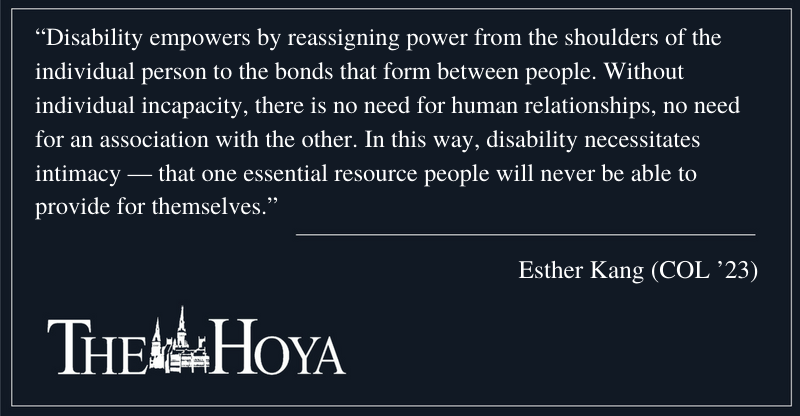Throughout mainstream media, disabled lives appear to exist in just two dimensions. Either they are maudlin tragedies or, if they have “happy endings,” they are inspirational success stories in which an individual “overcomes” their disability. These two common tropes are equally problematic. However, the latter narrative is most frequent in advertising and social media, and the unspoken notions that structure it infantilize disabled people and presume a disabled life is synonymous with misery.
The derogatory nature behind sensationalizing disability is commonly recognized in Jerry Lewis’ telethon for the Muscular Dystrophy Association, which reached peak popularity in the 1990s. On the show, young children were used as the primary representatives for people with muscular dystrophy, a tactic intended to generate pity and compel viewers to donate to the MDA. Continuous with the show’s paternalistic campaign was the slogan “Save Jerry’s Kids,” which was used to indiscriminately refer to both children and adults. This generalization overlooked the reality that the majority of Americans with muscular dystrophy were adults, and the intense focus on children denied adults with muscular dystrophy of both dignity and public significance.
In the magazine Parade, Lewis imagined what it must be like to be one of the people living with muscular dystrophy: “I realize my life is half, so I must learn to do things halfway. I just have to learn to try to be good at being half a person ….” This speculation reveals how he saw disability as a barrier to basic personhood; the fact that Lewis did not recognize people with muscular dystrophy as fully human uncovers how, fundamentally, pity toward disabled people is driven by their dehumanization.
Nondisabled society has continued to associate disabled people with regressive traits including childlikeness and incompleteness. For example, the popular motivational videos captioned “What’s your excuse?” show elderly or physically impaired people accomplishing physically strenuous activities. The videos are meant to be uplifting material for nondisabled people. However, the encouraging theme stems from the ableist complex of “If they, the disabled, can do it, then anyone — that is, any abled person — should be able to do it.” The disabled person is presented as setting the lowest bar for achievement, and the humbling of able-bodied viewers exposes how people with disabilities are typically supposed to be perceived as “behind” nondisabled people in terms of human progress.
Common reactions to these kinds of videos include astonishment as to how the people in the videos “overcame” their disabilities. At its surface, the expression functions as a compliment, seeking to recognize the hardships the disabled recipient faces. However, “overcoming” suggests that an individual has accomplished things in spite of their disability. Believing that disability is first and foremost an obstacle again enforces the belief that the sole existence of disability obligates its correction.
The emphasis on someone “overcoming” also reveals how the responsibility for a disabled person’s social inclusion is placed on the individual rather than society. Aside from monetary donations, society removes itself from being accountable for a disabled person’s sense of recognition. Even when disability is recognized, visibility of disabled people is commonly reduced to images of children and relapse.
In place of these typical depictions, we must amplify how disability, unlike other identities, prioritizes interdependence. Disability empowers by reassigning power from the shoulders of the individual person to the bonds that form between people. Without individual incapacity, there is no need for human relationships, no need for an association with the other. In this way, disability necessitates intimacy — that one essential resource people will never be able to provide for themselves.














